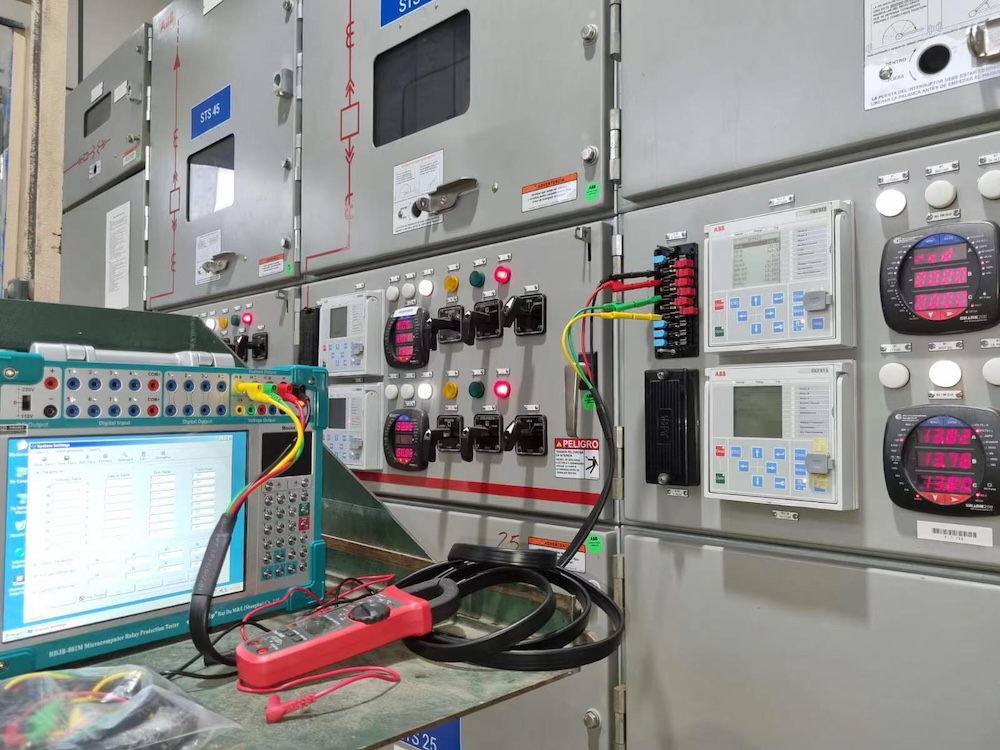The abnormal phenomenon and processing method of relay protection test instruments
Relay protection test instruments are used to verify and calibrate the performance of relay protection devices in the power system, and the reliability is directly related to the safe operation of the power system. In actual use, various abnormal phenomena may be encountered. These phenomena not only affect the accuracy of the test results, but also may cause device damage. This article will explore these abnormal phenomena and their treatment methods in detail, and analyze it in combination with actual cases.

Common abnormal phenomena and processing methods
1. The current jack alarm
Abnormal phenomenon
During use, the alarm light on a phase current jack is on, accompanied by a continuous alarm sound. This phenomenon usually indicates that there is a problem with the phase current circuit.
Possible reasons
Current opening: the connection line is disconnected or poorly exposed, resulting in the current of the current cannot circulate normally.
Excessive load: The load exceeds the output ability of the instrument, resulting in overload protection action.
Treatment method
Check the wiring: First check whether all the connection cables are firmly connected, especially the connecting parts that are easy to loosen. Use the multimeter to detect the continuity of the line to ensure that there is no way.
Adjustment load: If the load is too large, test should be reduced or staged to ensure that the load of each test is within the allowable range of the instrument.
Case analysis: In a routine inspection of a substation equipment, technicians found that a phase of the current jack called the police. After careful inspection, it was found that the current was opened due to loosening. After the wiring is fixed again, the alarm disappears, and the test returns to normal.
2. Power amplifier power problem
Abnormal phenomenon
The amplifier jumps away immediately when the input or output voltage, accompanied by the power indicator light and the alarm sound. This situation usually means that there is a failure of the amplifier.
Possible reasons
Short -circuit: There is a short circuit between the output terminal or between the external connection device.
Severe overload: The output load is far beyond the power amplifier design ability, leading to the protection action.
Treatment method
Check out the output circuit: After turning off the power of the instrument, carefully check whether all the connection is correct, especially whether the output terminal is short circuit. Use the insulation tester to check the insulation.
Reduce load: Make sure the connected load is within the allowable range of the amplifier. If a large power output is required, the load should be increased in stages.
Case analysis: In a certain on -site test, the technicians found that the amplifier jumped away frequently. After investigation, it was found that due to the short -circuit failure introduced by external equipment, the normal work was restored after adjusting the device.
3. Self-protection signals cannot return to return
Abnormal phenomenon
After a long period of high load test, the self -protection signal cannot be returned. Even if the reset button is pressed, the self -protection still moves again.
Possible reasons
Excessive protection: Long -term large current output causes the internal temperature of the equipment to be too high, and the self -protection mechanism is started to prevent damage.
Internal failure: There may be internal components aging or failure, and professional maintenance is needed.
Treatment method
Stop operating output: immediately stop all operations and turn off the instrument to cool down.
Check the heat dissipation system: Make sure that the cooling fan and ventilation port are not blocked, and the dust is cleaned to improve the heat dissipation efficiency.
Test in stages: When conducting high load tests, it should be performed in stages in stages, and the equipment is given enough cooling time after each test.
Case analysis: After a long period of high load test, the self-protection signal cannot be returned. After analysis, it was caused by the failure of the equipment in time. The heat dissipation time was increased and the ventilation conditions were increased during the test again, thereby solving the problem.
Safety use suggestions
In order to ensure the safety and effective use of relay protection testing instruments, the following points should be paid attention to:
Earthquake safety: Before the test, the host should be reliable to ground through the ground to prevent the fuselage sensing static electrostatic damage to the equipment and operators.
Avoid external interference: It is strictly forbidden to introduce external cross -current power supply into the voltage source, current source, and output output jack of the instrument to avoid damaging the instrument and affect the measurement results.
Keep good ventilation: Make sure that the air flowing on the side of the chassis is smooth, and do not cover the ventilated port to avoid affecting the heat dissipation efficiency.
Reasonable arrangement of test interval: After a single -phase output or a large current in parallel, the instrument should be ensured at least 30 seconds of heat dissipation time to perform the next test to extend the life of the equipment and prevent overheating.
By following these suggestions, it can effectively reduce the probability of abnormal phenomena of relay protection testing instruments, improve their service life and work efficiency, while ensuring the safety of operators. Combined with actual cases and detailed analysis, this article provides valuable reference information for practitioners, helping to quickly locate and solve problems in actual work.




